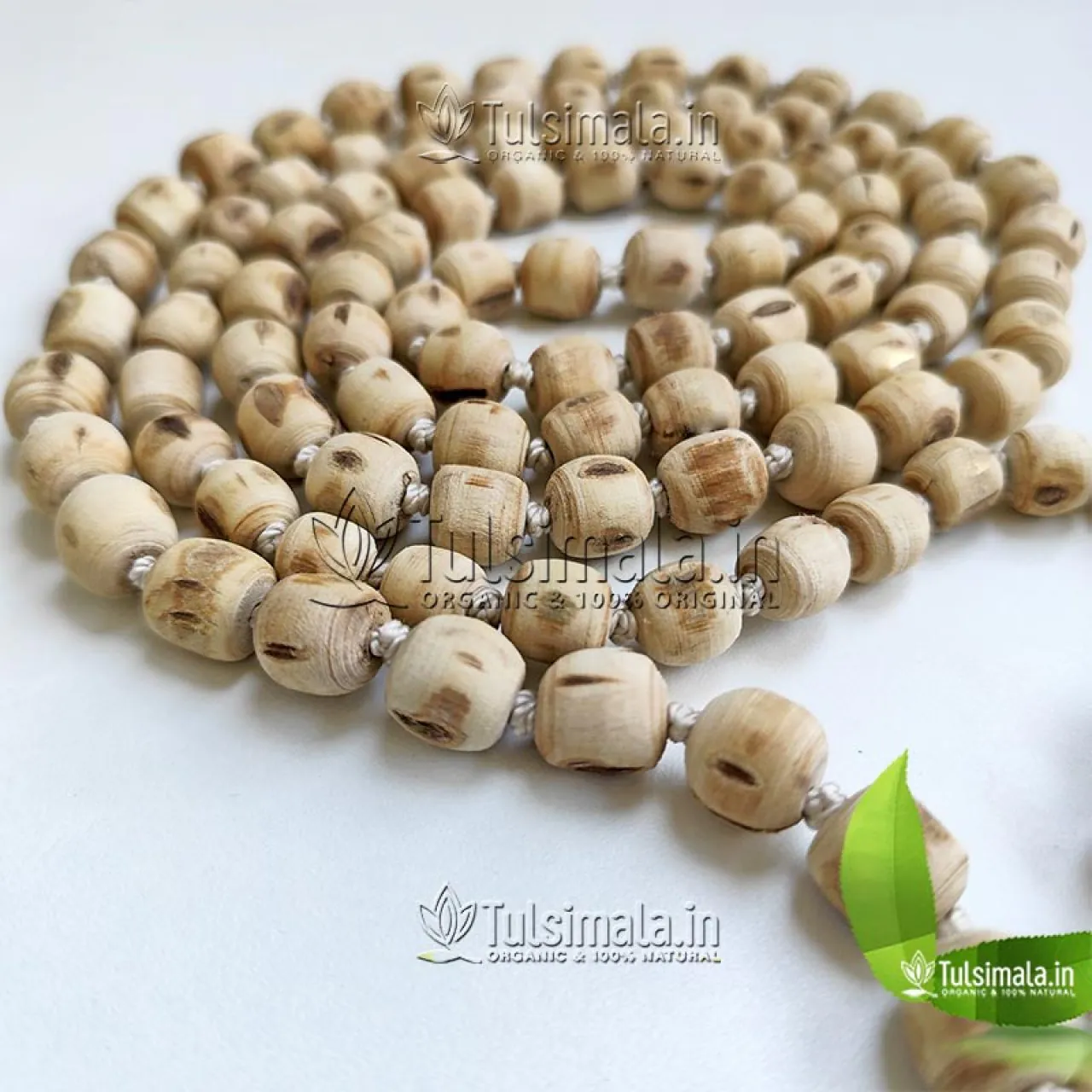108 BEADS TULSI MALA MEDITATION WITH THE MANTRA

108 BEADS TULSI MALA MEDITATION WITH THE MANTRA
There are various practical aids to progress in japa meditation that have been tested for thousands of years and are based on sound psychological and natural principles.
The telling of Tulsi beads is the form of japa most familiar to Western experience. A Tulsi Japa Mala, similar to a rosary, is often used in Mantra repetition. It helps to foster alertness, acts as a focus for the physical energy, and is an aid to rhythmic, continuous recitation. It consists of 108 beads of Tulsi Mala. An additional bead, the Meru, is slightly larger than the others. It is the signal indicating that with one Mantra recited for each bead, Japa has been done 108 times or one Tusli Japa Mala. The fingers should not cross the meru. When reached, the Tulsi beads are reversed in the hand; one continues reciting the Mantra, moving the Japa Mala in the opposite direction. The thumb and third finger roll the beads; the index finger, which is psychically negative, is never used. The rosary must not be allowed to hang below the navel and should be wrapped in a clean cloth when not in use.
An appropriate prayer before beginning induces purity of feeling. With eyes closed and concentration focussed either between the eyebrows on the ajna chakra or on the Anahata chakra of the heart, one should invoke the aid of his chosen deity and guru. The Mantra must be pronounced distinctly and without mistakes, for it and the deity itself are one and the same thing. Repetition must be neither fast nor slow, and thought must be given to its meaning. Speed should be increased only when the mind begins to wander. Because the mind will naturally try to drift away after a time, it is necessary to keep alert throughout the practice.
Variety in Tulsi Japa Mala is necessary to sustain interest, avoid fatigue, and counteract the monotony that can arise from the constant repetition of the same syllables. This can be provided by modifying the volume. The Mantra can be repeated aloud for a while, then whispered, and then recited mentally. The mind needs variety or it becomes tired. However, even mechanical repetition that is devoid of feeling has a great purifying effect.
Mental repetition, manasika japa, is the most powerful; it requires keener concentration, for the mind tends to shut off after a period of time. The advantage of loud japa, which should be used with discretion, is that it shuts out all worldly sounds and distractions. One should alternate when necessary, particularly when used in Mantra repetition. It helps to foster alertness, acts as a focus for the physical energy and is an aid to rhythmic, continuous recitation.
It consists of 108 beads. An additional bead, the Meru, is slightly larger than the others. It is the signal indicating that with one Mantra recited for each bead, Japa has been done 108 times or one Tulsi Japa Mala. The fingers should not cross the meru. When it is reached, the beads are reversed in the hand; one continues reciting the Mantra, moving the mala in the opposite direction. The thumb and third finger roll the beads; the index finger, which is psychically negative, is never used. The rosary must not be allowed to hang below the navel and should be wrapped in a clean cloth when not in use.
Note: Buy original tulsi mala by visiting our website www.tulsimala.in or you can click the below links











